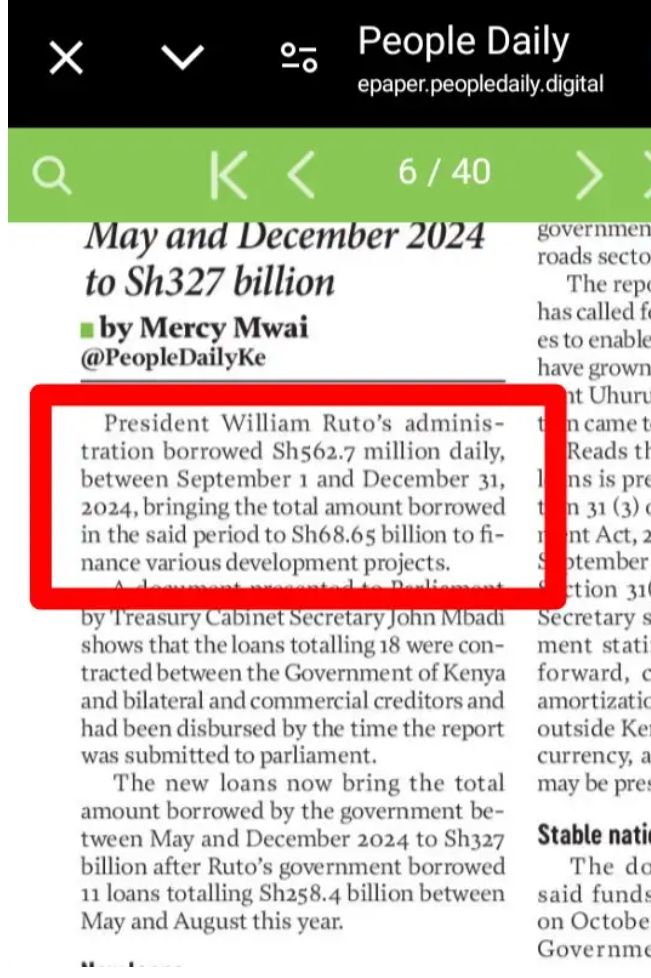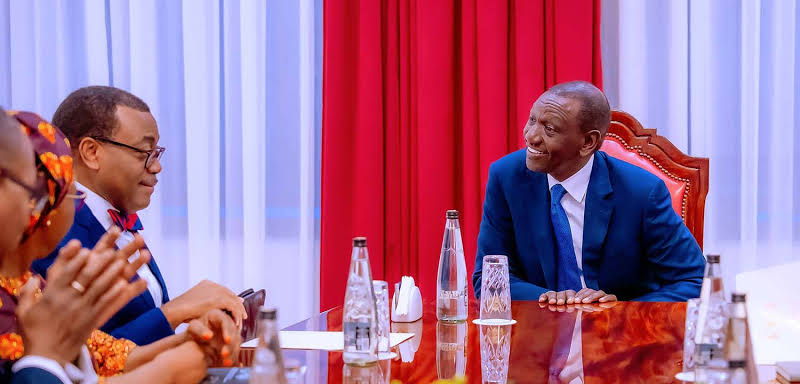President William Ruto is facing a fresh hurdle after new documents were presented to the National Assembly by Treasury Cabinet Secretary John Mbadi.
According to a report published on Monday’s People Daily, the documents show that the Kenya Kwanza government borrowed an average of KSh 562.7 million daily between September 1 and December 1 last year.
The loans were taken from commercial creditors as well as bilateral lenders.
The report further reveals that between May and December of the same year, the government borrowed KSh 327 million daily.
These figures raise questions about the financial decisions of the Ruto administration, especially considering the president’s repeated calls for Kenyans to live within their means.
The borrowing trend contradicts his message to citizens, as the government itself seems to be relying heavily on debt to sustain its operations.

President Ruto has often emphasized the need for fiscal discipline, urging Kenyans to tighten their belts and avoid unnecessary spending.
However, these latest revelations suggest that his administration is not following the same advice.
Many Kenyans are struggling with the high cost of living, and the government’s continued borrowing raises concerns about the country’s future financial stability.
If the borrowing continues at this rate, it could lead to even higher debt levels, putting more pressure on taxpayers.
The Kenya Kwanza government had promised to reduce borrowing and focus on increasing revenue through tax collection and economic growth.
However, the current situation indicates that these efforts have not been enough to prevent further debt accumulation.
The reliance on loans from commercial and bilateral lenders suggests that the government is struggling to finance its budget without external help.
Critics argue that excessive borrowing without proper planning could lead to a debt crisis. Kenya already spends a significant portion of its revenue on debt repayment, leaving less money for essential services such as healthcare, education, and infrastructure development.
The more the government borrows, the higher the interest payments, which could force it to introduce more taxes or cut spending on critical sectors.
The opposition and economic experts have warned that the government’s borrowing habits could lead to long-term economic challenges. If the trend continues, Kenya could find itself in a situation where it has to borrow more money just to pay off existing loans.
This cycle of debt dependence could weaken the country’s financial position and reduce its ability to invest in development projects.
As the National Assembly reviews the documents presented by Treasury CS John Mbadi, there will likely be increased scrutiny of the government’s financial management.
Kenyans will be watching closely to see whether the Kenya Kwanza administration will take measures to reduce borrowing or continue on its current path. The big question remains will President Ruto’s government practice what it preaches, or will it keep borrowing despite the risks?

